► PHEV power arrives on Defender
► One of the quickest models, 27-mile e-range
► Priced from £66k for P400e X-Dynamic
It was inevitable – for Land Rover to survive the next decade, it had to electrify its model range with a hybrid. So, the new Defender 4×4 has received a ‘P400e’ badge, and it might just be the most sensible of choices. Particularly if you’re more of an urbanite Land Rover buyer.
I need a spec debrief first…
Okay, so the Defender P400e uses a 2.0-litre four-cylinder turbo engine mated to an electric motor and 19.2kWh battery for a total output of 398bhp and a punchy 472lb ft. That electric assistance means the hybrid SUV can deliver a pokey 5.6sec 0-62mph time – not far off the upcoming Defender V8 – and a claimed e-range of 27 miles. Land Rover claims 85.3mpg as its best fuel economy figure and, naturally, the P400e is the Defender with the lowest emissions.
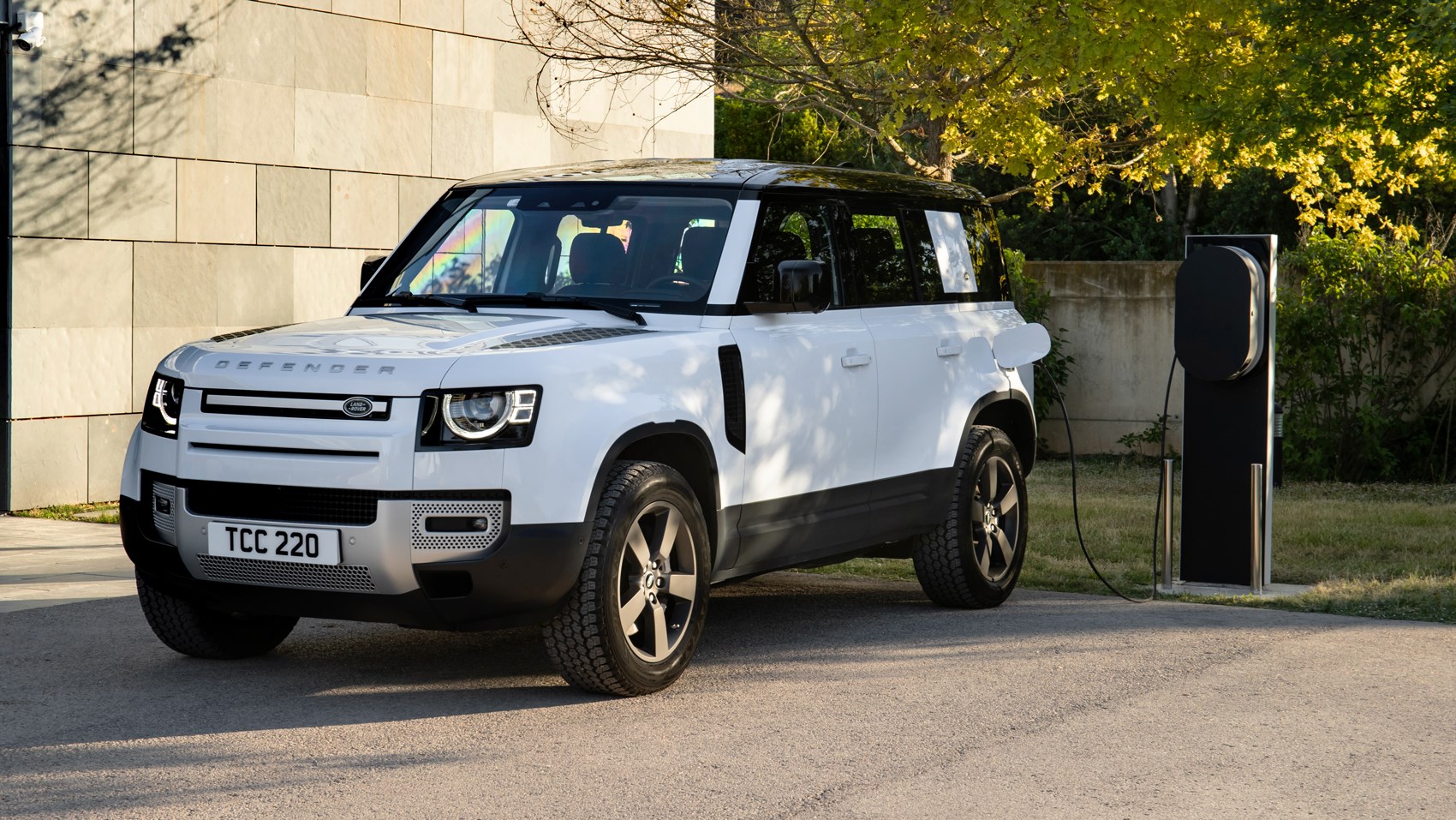
Interestingly, unlike the Evoque P300e where the engine drives the front and the e-motor drives the rear axle, the Defender’s e-motor is sandwiched between the engine and the gearbox. Adam Southgate, vehicle dynamics senior manager for JLR, told us it the Defender’s use of e-power is such as to not adulterate the off-road capabilities.
The Defender P400e is also one of the few PHEVs with integrated fast charging (most can only accept around 22kW from a ‘Type 2’ socket here in Europe); 50kW charging capacity allows the Defender’s battery to be topped up to 80 per cent in as little half an hour, or full in around two.
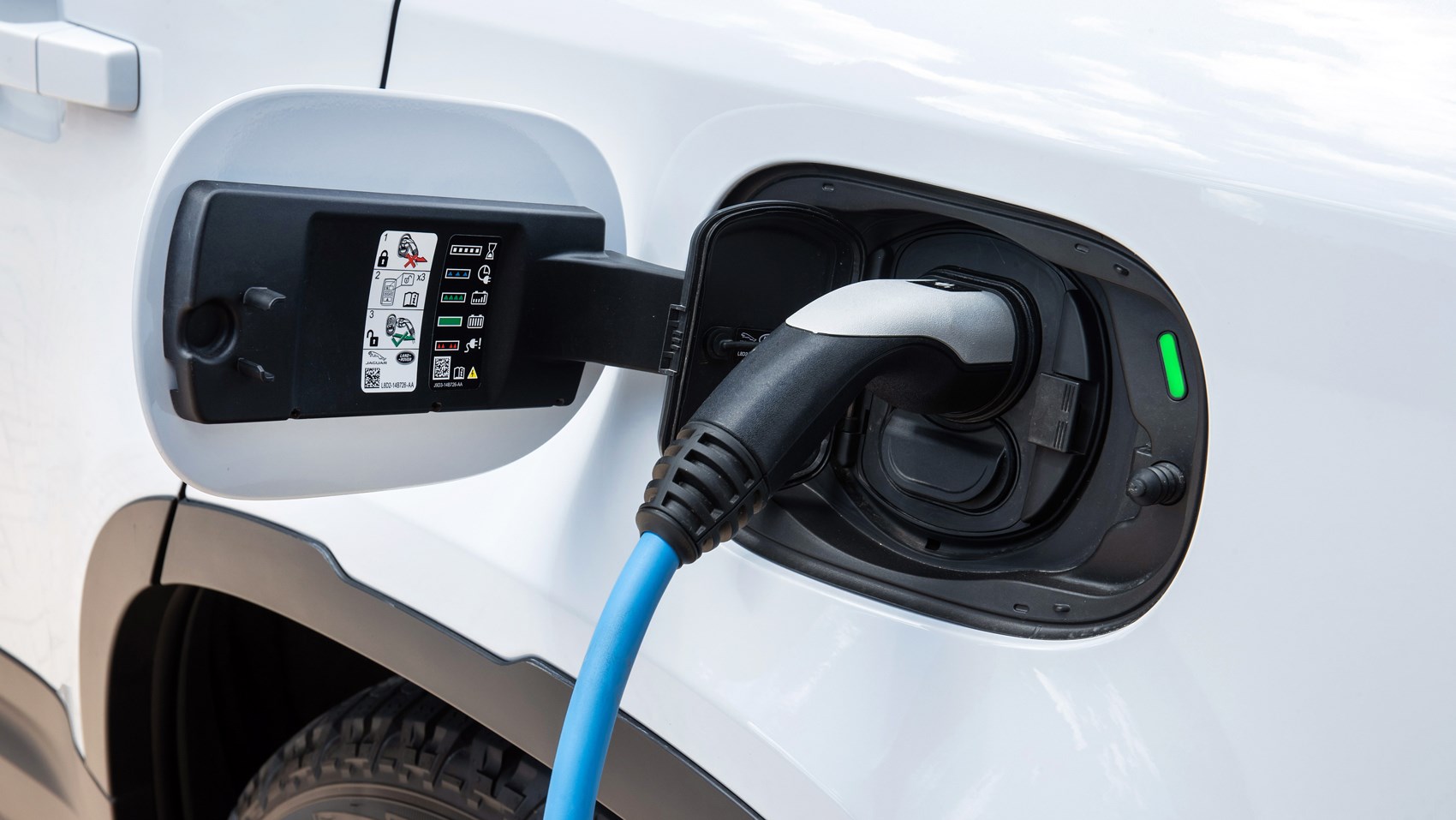
Land Rover says only the Defender 110 will benefit from the PHEV option – the 90’s chopped platform is too short to fit in the battery pack. Practicality has hardly suffered with the hybrid switch in the 110. Boot space with all the rear seats in place takes a hit as the boot floor is raised; a ‘regular’ 110 benefits from 1075 litres, while the P400e has a volume of 853 litres. Elsewhere though, you can still tow up to 3000kg and still spec a six-seat option.
Let’s drive!
From the cabin – the whole car in general, frankly – there are very few cues you’re driving a hybrid. The digital dials incorporate power and charge meters as well as a normal rev counter, there’s an EV mode button on the centre console and a dedicated info screen within the infotainment. Still feels like a Defender from where you’re sat, with thickly padded seats and a wholly utilitarian yet brilliantly designed interior. Cubbies everywhere, tough materials complemented by soft-touch padded areas and exposed rivets aplenty.
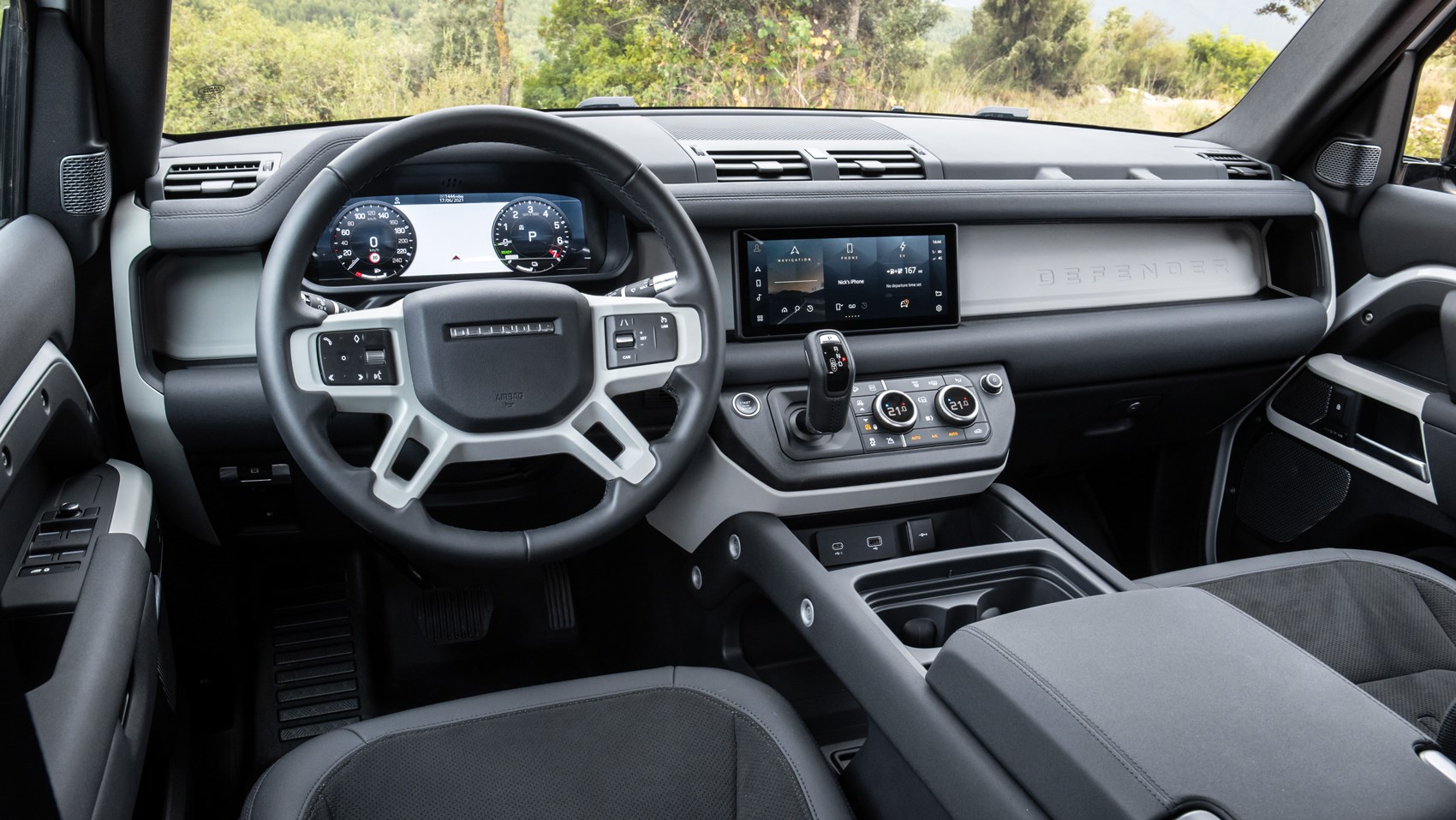
Remain, too, do the imperious driving position and hefty weights of all the controls. Whizzing around on e-power alone may feel alien to start with, but you get used to the additional refinement at low speeds that electric power offers on such a plush 4×4, coasting through cutesy villages like a saint.
When you want to sin, that e-power really aids performance – despite this Defender weighing more than 2.5 tonnes dry, the additional torque from the electric motor is a welcome bonus. Interestingly, because the e-motor is before the gearbox, you still feel gearchanges in e-mode and – something that’s more of a downside – it also means you still have to wait for the gearbox to engage a gear when you stamp on the go pedal; no instant e-torque here from a standstill, but it more than makes up for it after cogs have been swapped. Also, when you’re silent running, you do tend to notice wind noise more than when the engine is on – particularly over the door mirrors.
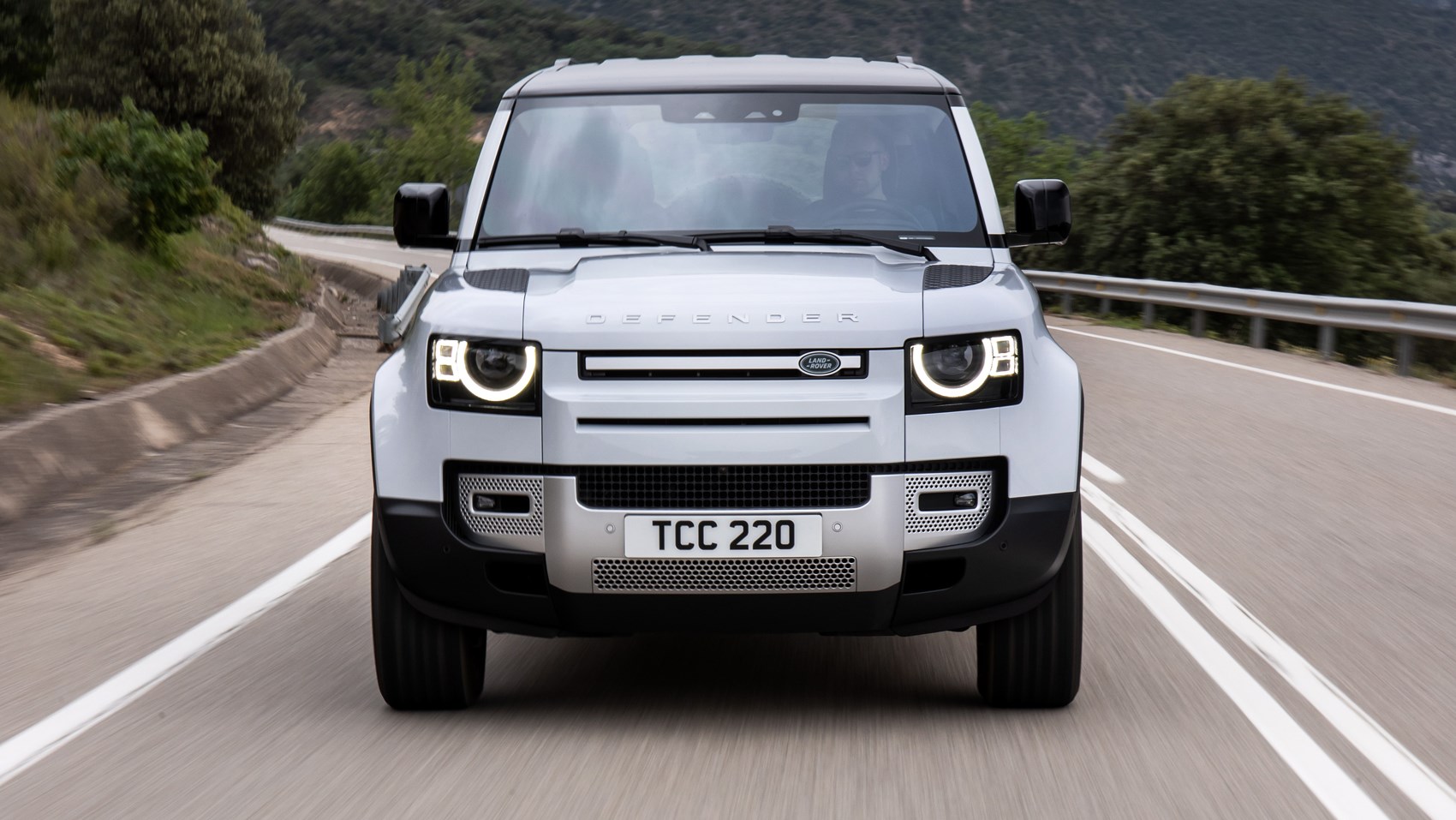
Speaking of the engine, the 297bhp petrol employed here isn’t the most refined – oddly combating the extra refinement (mostly at low speed) that the electric motor provides. It sounds gravelly under acceleration but not in a muscular, satisfying way but at least is quiet enough at speed not to be too much of a bother.
You have three drive modes for the PHEV powertrain. The Defender always starts in Hybrid – where the car will juggle both power outputs with aplomb – while EV mode and Save are relatively self explanatory. During our circa 60-mile test drive (that included motorway stints, zipping through small villages and fast B-roads), we achieved 44mpg – around 10mpg better than the claimed fuel economy of the mild hybrid diesel and petrol offerings on the Defender X-Dynamic spec (the baseline trim you can buy a P400e Defender with).
Does the hybrid Defender handle differently?
Short answer: no. The additional weight hasn’t changed the Defender’s sweet handling characteristics one bit, from our time with it. The steering is remarkably direct for such a large, hefty vehicle and the ride still treads a fine balance between wallowy and lumpy.
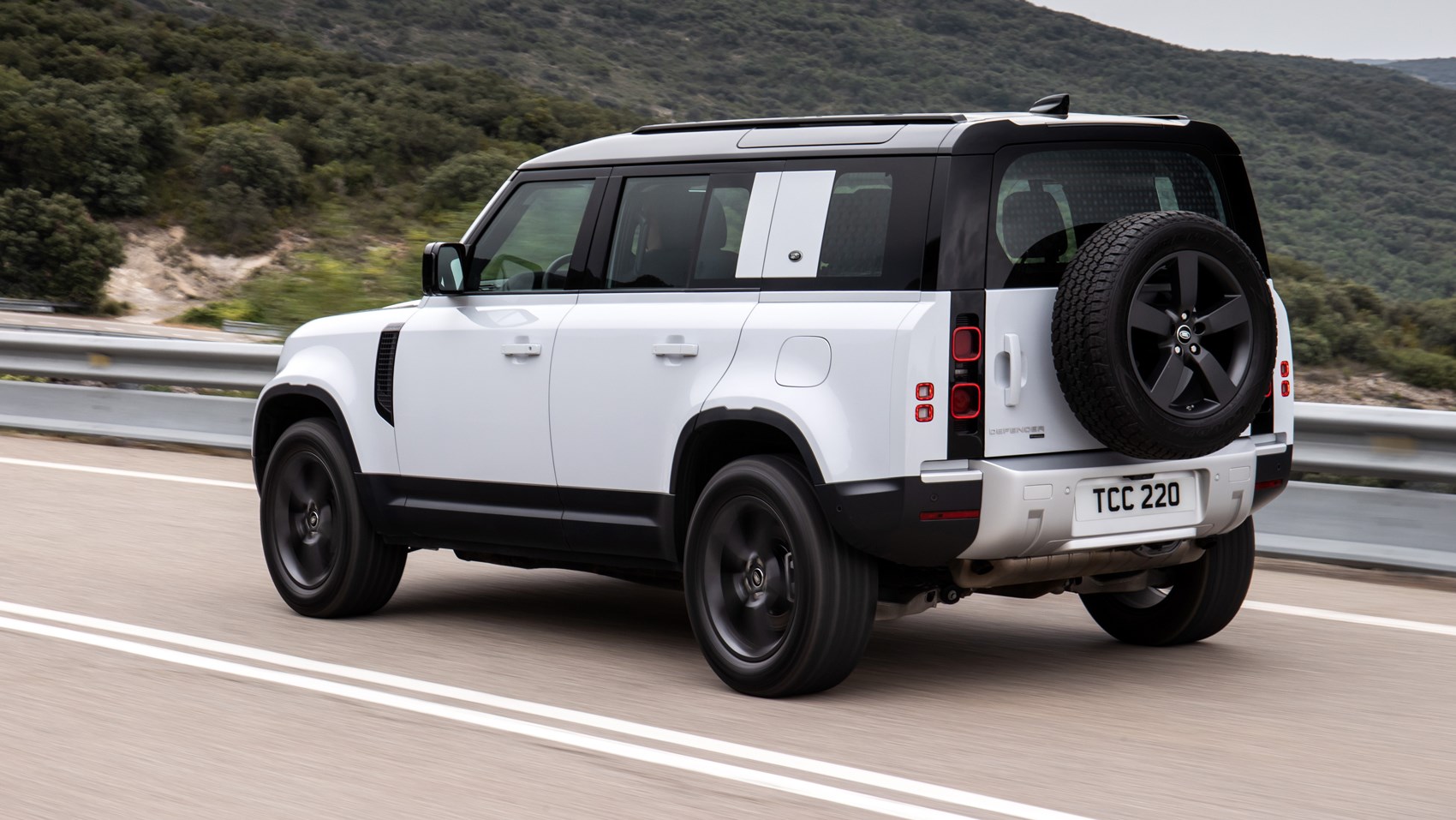
A trait that usually infects plug-in hybrids is a difficult-to-modulate brake pedal; the brand’s own Range Rover and Range Rover Sport suffer from pillowy, inconsistent pedals when you apply pressure. Thankfully here, Land Rover has dialled most of that out – there’s about an inch of travel without much resistance (or brake pressure), then the calipers come on stream with consistency and bite.
Land Rover Defender P400e plug-in hybrid: verdict
It’s very much the sensible and logical choice of Defender, particularly for those suburbanites who want a Defender more for its prestige and practicality and have short commutes to work.
The smooth and juicy straight-six diesels will not only warm the cockles of your heart a little more than the PHEV and allow you a lower entry price into Defender ownership, but the P400e is one of Land Rover’s most convincing hybrids yet simply because you can easily achieve better fuel economy than any non-electrified if you have the facility to regularly charge.
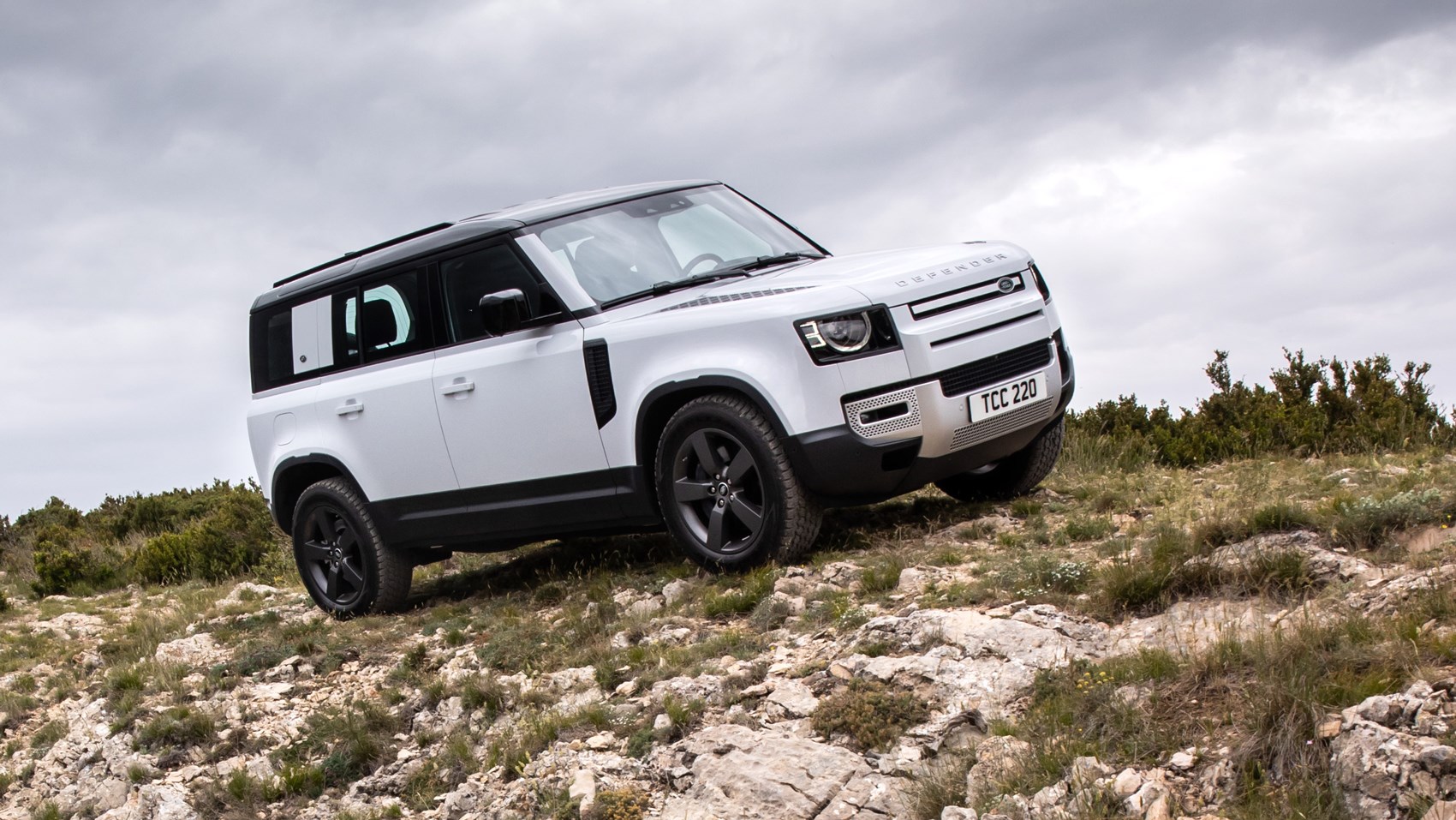
Read more Land Rover reviews here